
Rediscovering Japan

Rediscovering Japan
Travel (Nara Part 3 (Heijoukyo (Nara Palace)/Nara Hotel/Nara National Museum))

by tomizuta
back to Nara Part 1 (Kofukuji/Todaiji)
back to Nara Part 2 (Todaiji/Kasuga Taisha
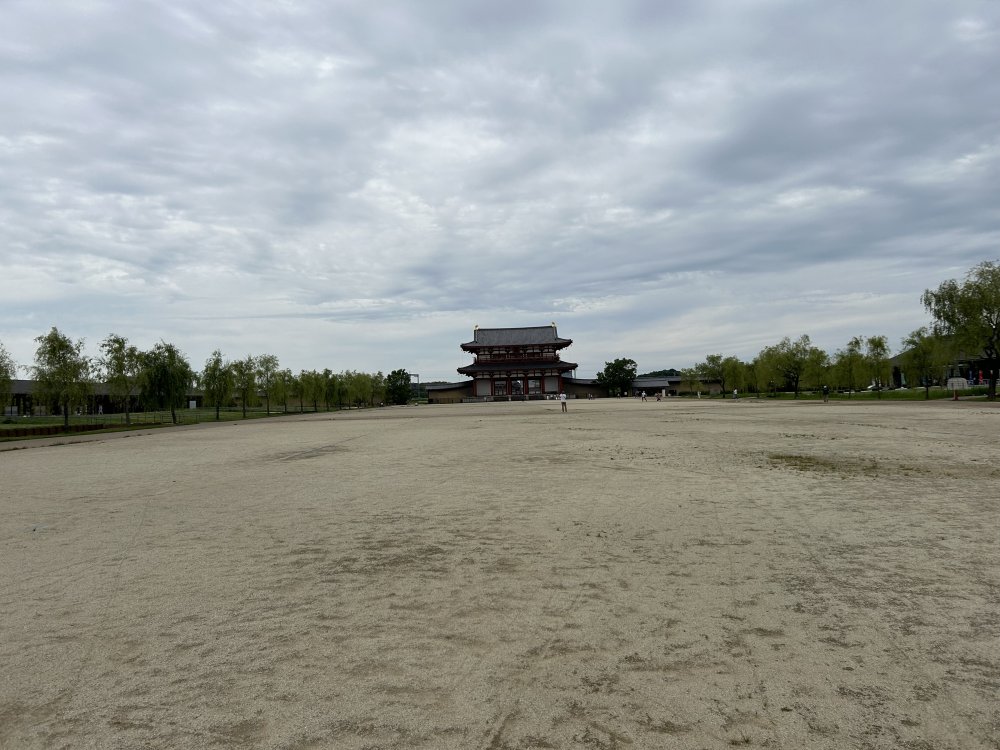
The excavated and reconstructed 70 meters wide approach to the Suzakumon Gate.
Heijo-kyo (or Nara Palace) was the center of Japanese political and cultural life from 710 to 784. Shortly thereafter the center moved to Kyoto in 794, where the Imperial Family resided until 1868. The Nara Palace Site was designated a Special Historic Site in 1952, and in 1998 the Historic Monuments of Ancient Nara were registered as a UNESCO World Heritage site. Heijo-kyo, modeled on the Chinese city Chang’an, was built in a rectangular shape, approximately 4.3 km from east to west and 4.8 km from north to south, with an additional protruding section on its eastern side, called Gekyo, which was approximately 1.6 km wide from east to west, and 2.1 km from north to south. The two Buddhist temples established under order of the Emperor, Todai-ji and Saidai-ji were situated on the northern east and northern west corners respectively. You can see from the map below that we traveled from Kasuga Taisha, which is situated south of Todai-ji and directly east of the southern perimeter of Heijokyo. There is a bus service “Gurutto Bus (round trip bus)” traveling east-west between Kasuga Taisha and Saida-ji which took us from Kasuga Taisha to the Heijo-kyo site entrance (marked with a blue circle in the center of the map).
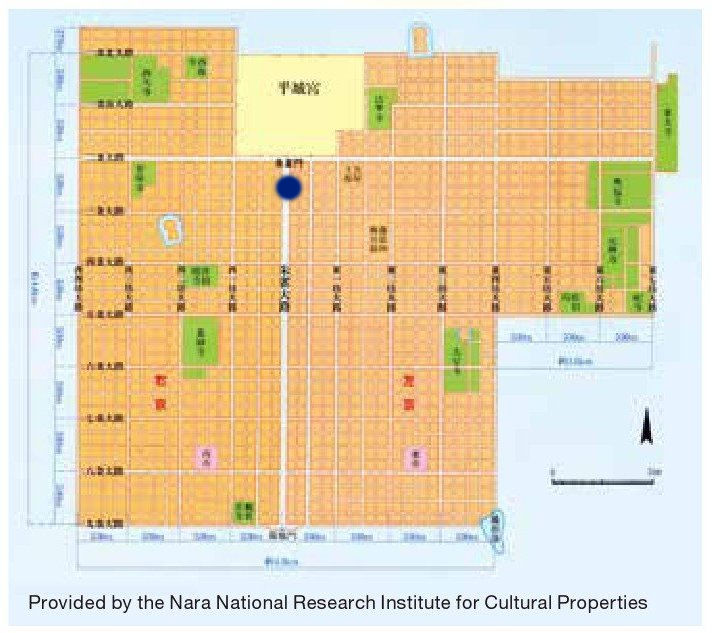
The above map was the only publicly available map of Heijokyo that I could find. The green area at the top right is Tōdai-ji, and the green area at the top left is Saidai-ji. The yellow area in the upper center is Nara Palace. I took a bus from Kasuga Taisha, located just below the green area of Tōdai-ji, to Suzakumon, marked by a blue circle in the central part. The distance is approximately 4 km.
We got off at the Suzakumon-hiroba-mae bus stop, crossed the road to enter
the site. From there we walked north along the 70 meters wide Suzaku-oji
(Suzaku Avenue) to the reconstructed Suzakumon Gate.
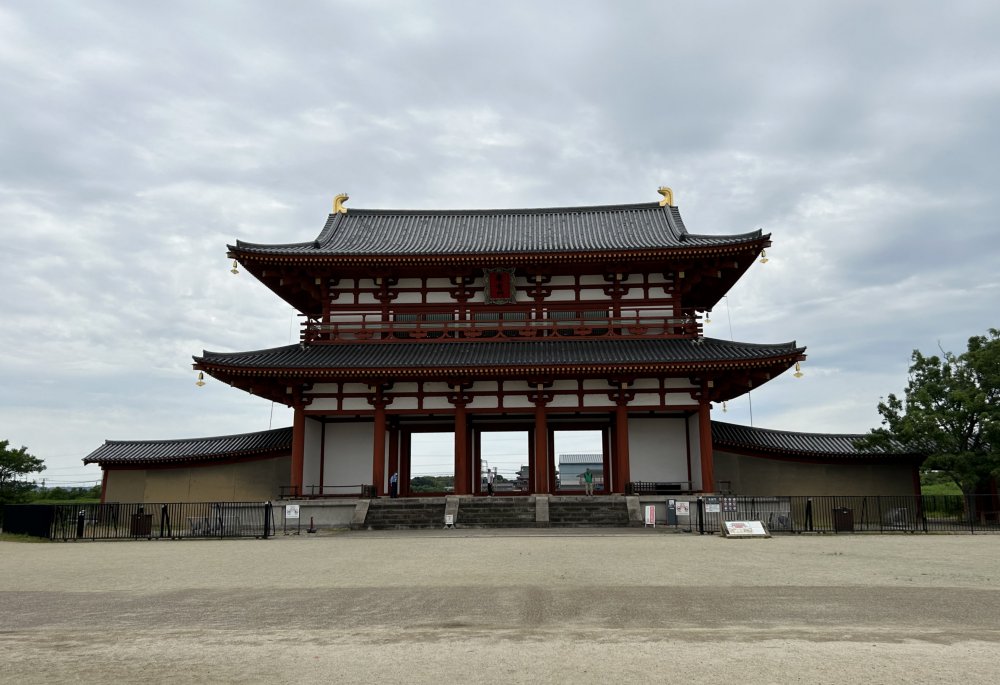
The grand Suzakumon Gate.
We were running out of time, and briefly went through the Suzakumon Gate. From there you can command a view of the ongoing reconstruction work of the Daiichiji Daigokuden (Former Imperial Audience Hall Compound) where state ceremonies were conducted during the first half of the Nara Period. (The imperial palace was relocated to a number of other places until returning to Nara (Heijokyo) between 740 to 745. The period up to 740 is called the first half of the Nara Period). Upon the return of the imperial palace to Nara, the Daigokuden was constructed in an area east of the Daiichiji Daigokuden, and is called the Dainiji Daigokuden (Second Imperial Audience Hall). The Kintetsu Nara Line can be seen diagonally crossing between the Daigokuden and the Suzaku Gate.
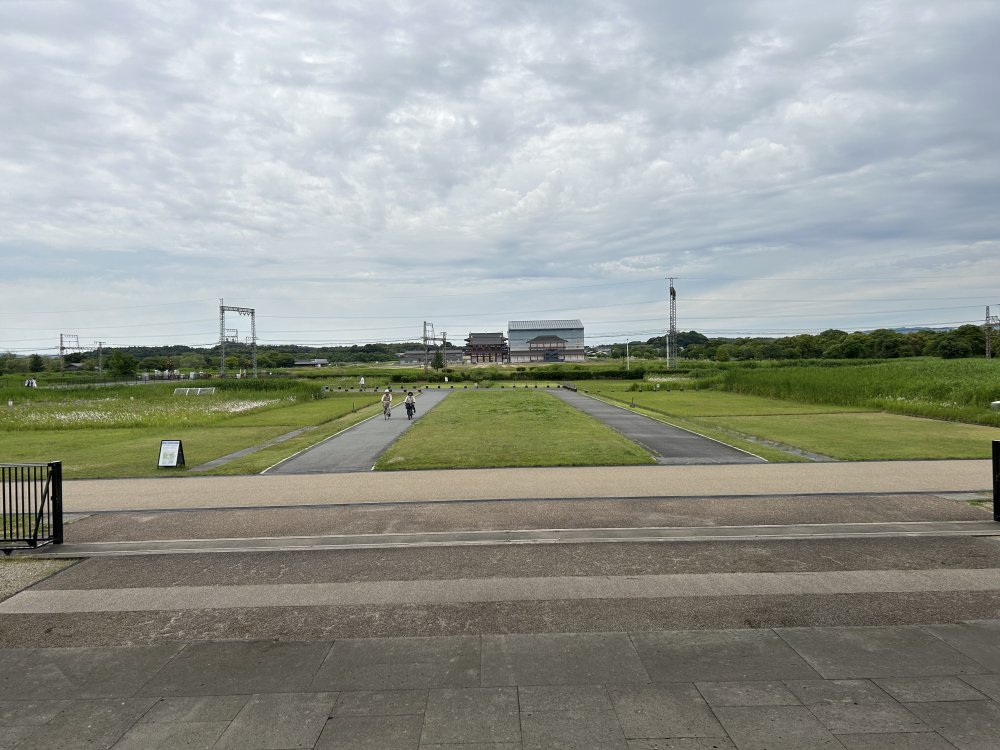
The ongoing reconstruction of the Daiichiji Daigokuden in the far back, and the Kintetsu Nara Line crossing diagonally inbetween.
The last time I visited Nara was in July 2016. At that time, I drove past the Heijo Palace site, but nothing particularly stood out, so I just passed by. For this visit to Nara, I requested the guide to include the site in the tour based on information that restoration work was progressing. Upon further research, I learned that the restoration of Heijo Palace is being conducted mainly by the national government with cooperation from Nara Prefecture (with a total area of 132 hectares, including a 122-hectare national park). The restoration work on the Daiichiji Daigokuden started in 2017. As of 2024, to the right of the Suzaku Gate is the ' Heijokyu Izanai-kan' a visitors’ guidance facility managed by the Agency for Cultural Affairs (the total reconstruction of the site is a joint effort of the Agency for Cultural Affairs and the Ministry of Land, Infrastructure, Transport and Tourism), and to the left is a facility operated by Nara Prefecture with shops, restaurants as well as a bus terminal. The displays of the Izanaikan were quite informative. We went back to Kintetsu Nara Station by bus, where we thanked and parted with our guide.
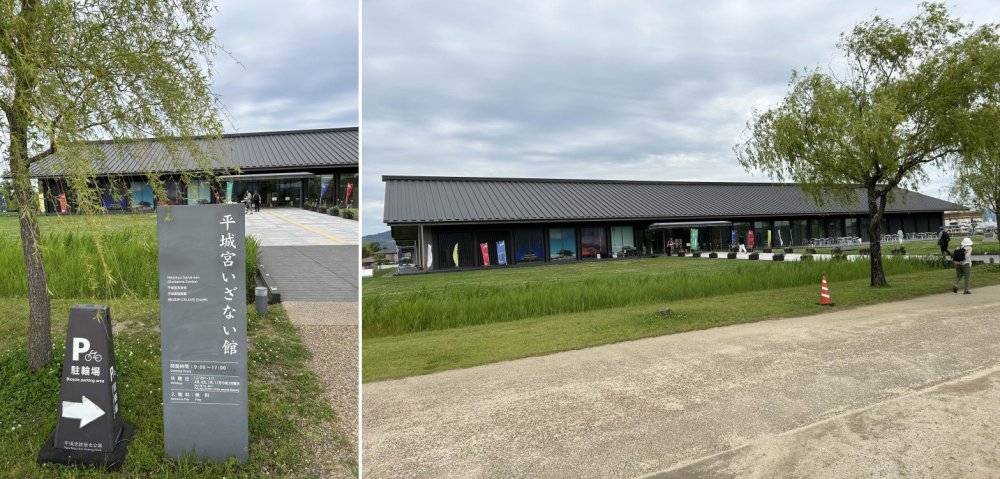
The Izanaikan on the left and the tourist facilities operated by Nara Prefecture on the right.
I stayed at the main building of the Nara Hotel that evening. Nara Hotel opened in 1909 at the end of the Meiji era as a guest facility to accommodate the surge of foreign visitors after the Russo-Japanese War. The main building, designed by Kingo Tatsuno, famous for designing the main building of the Bank of Japan, is an eclectic mix of Japanese and Western styles, and it still retains the atmosphere of classic Western hotels. The Western cuisine in the main dining room was thoroughly enjoyable in a serene atmosphere. Historically, the Nara Hotel has been primarily operated by the government, transitioning through the Ministry of Railways and Japan National Railways, and is currently operated by JR West. The facilities and staff provide exceptionally sophisticated service, allowing me to relax comfortably after a long day of sightseeing.
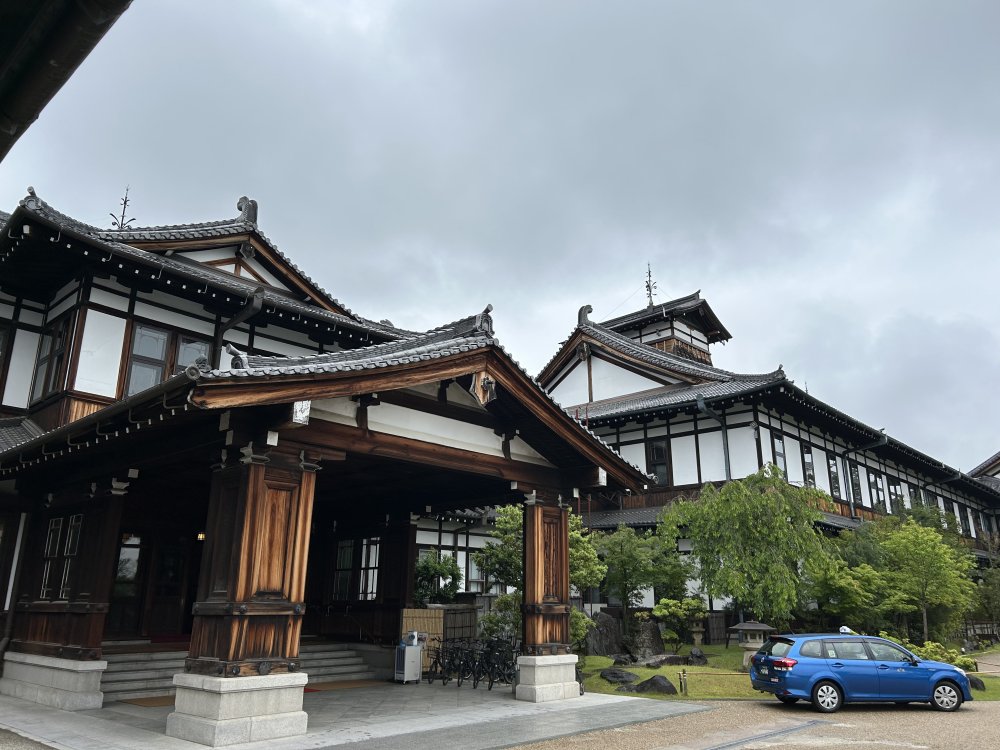
Nara Hotel opened in 1909 at the end of the Meiji era as a guest facility to accommodate the surge of foreign visitors after the Russo-Japanese War. The main building, designed by Kingo Tatsuno, famous for designing the main building of the Bank of Japan, is an eclectic mix of Japanese and Western styles, and it still retains the atmosphere of classic Western hotels.
The next morning, I first took a walk in the Garden of the Former Daijo-in Temple, located adjacent to Nara Hotel. Daijo-in was a temple founded in the late Heian period but was abolished at the beginning of the Meiji era due to the anti-Buddhist movement. The garden was created in the 15th century and had a reputation as the best garden in Nara until the early Meiji period. After undergoing restoration work, it has been open to the public since 2017. Although it was originally created at the beginning of the Sengoku period, the garden has a style similar to that of the daimyo gardens completed in the Edo period, with a path that winds around a pond.
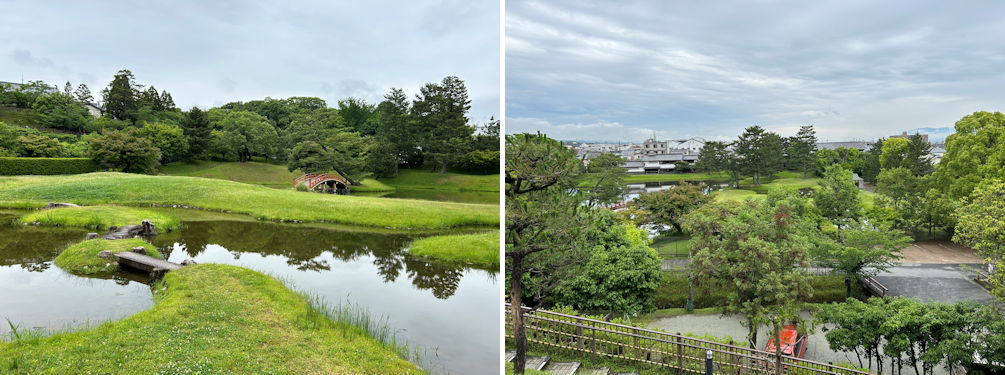
Garden of the Former Daijo-in Temple created in the 15th century had a reputation as the best garden in Nara until the early Meiji period (left). The view of the garden from the hotel grounds above (right).
As the conclusion of this visit to Nara, I visited the Nara National Museum
located within Nara Park. The Nara National Museum was opened in 1895 with
the aim of preserving and displaying the cultural heritage of temples and
shrines that were at risk of being lost due to policies such as the separation
of Shinto and Buddhism. The former main building, which is now used as
the Buddhist Art Hall, was the first Western-style building in Nara Prefecture.
However, it was unpopular from the beginning as it was considered unsuitable
for the Nara landscape.
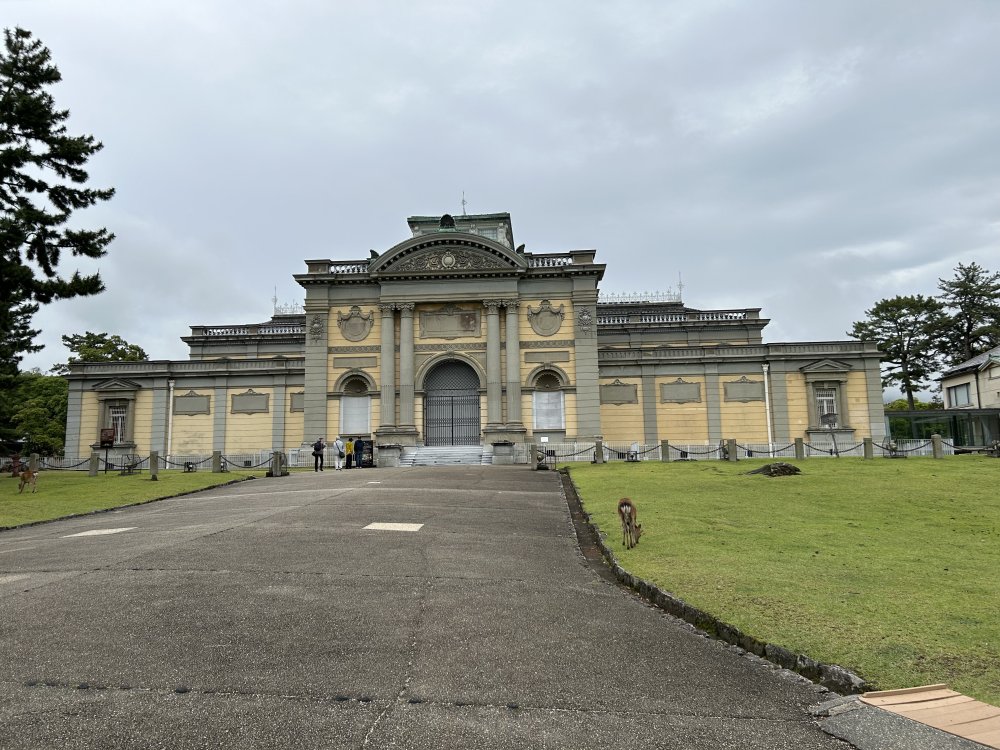
The former main building of Nara National Museum which is now used as the Buddhist Art Hall, was the first Western-style building in Nara Prefecture. However, it was unpopular from the beginning as it was considered unsuitable for the Nara landscape.
The current main building was completed in 1972. Nara Hotel, completed about ten years later, adopted a hybrid architectural style of Japanese and Western elements for this reason. We entered the museum to view the special exhibition "Kukai (The Worlds of Mandalas and the Transcultural Origins of Esoteric Buddhism)". Kukai(774-835) is a famous monk of the Heian era who brought Mikkyo to Japan and founded the Shingon sect. We had to queue to purchase tickets as well as to view the mandalas used to relay the secret teaching to common folk. The museum is known for its annual display of collections from Todaiji's Shouso-in held in October to November time. There is an underground passage to the Buddhist Art Hall, where we spent some time viewing the numerous Buddhist statues displayed there.
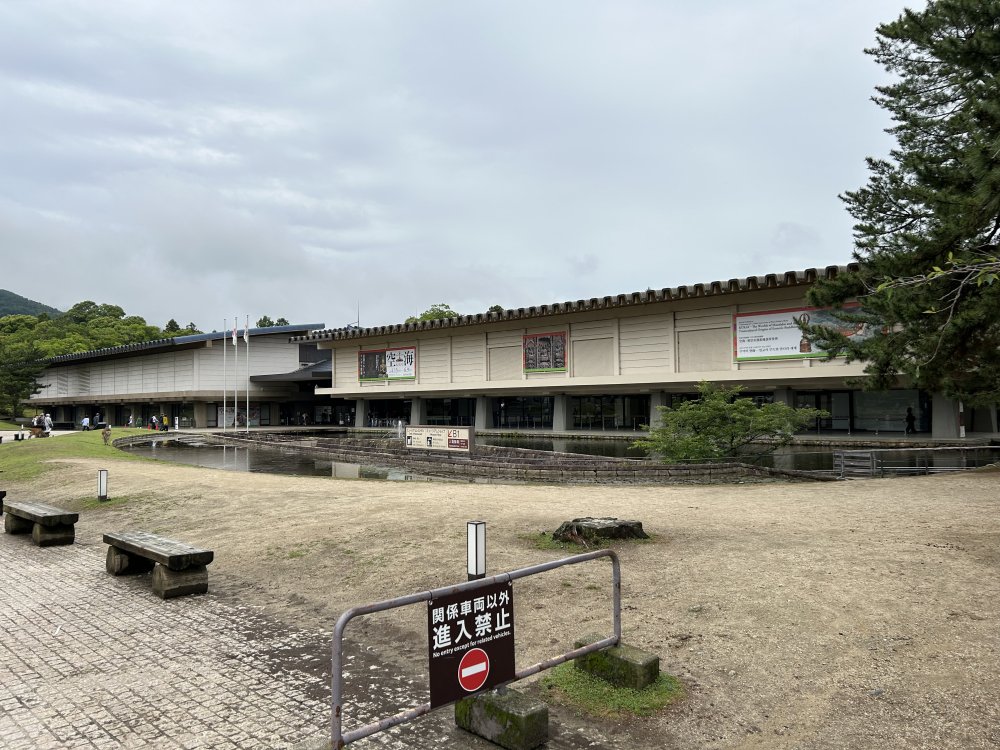 /p>
/p>
The current main building of Nara National Museum was completed in 1972.
There was another building I wanted to see. This was the former Nara Prefecture
Product Exhibition Hall, adjacent to the National Museum and currently
used as the Buddhist Art Research Center of the museum. Built in 1898 with
the aim of promoting industry in Nara Prefecture and exhibiting and selling
local products, the former exhibition hall was designed to harmonize with
the landscape of Nara Park. Its exterior incorporates Japanese architectural
styles from the Asuka to the Kamakura periods, resembling the Byodo-in
Temple in Uji, while the interior is Western in style (obviously mindful
of the unpopularity of the Western style former museum main building).
It was designated an Important Cultural Property of Japan in 1983. Unfortunately,
it is not open to the public, so I could only view it from the outside.
Over these three days in Nara, I gained a comprehensive understanding of
the ancient capital’s layout and learned many new things, making the visit
extremely meaningful. I would like to express my sincere gratitude to the
volunteer guide who accompanied me.
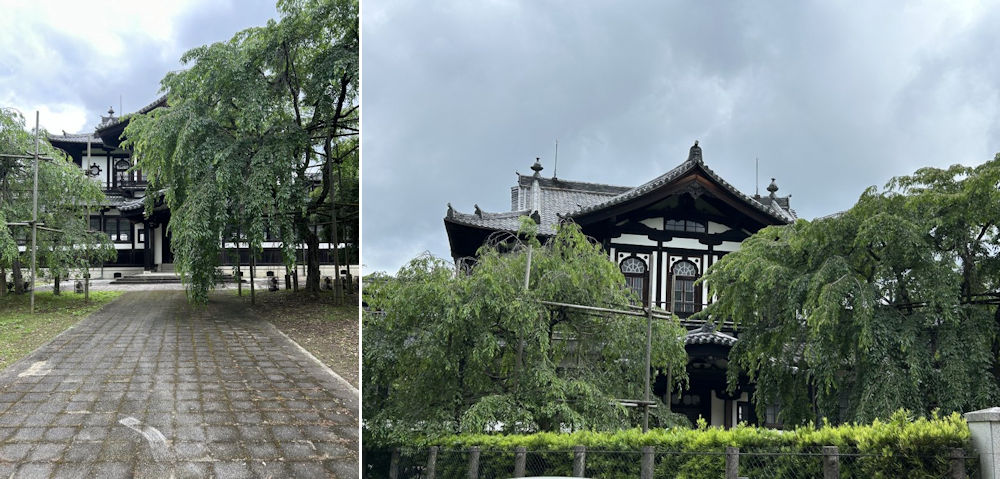
The former Nara Prefecture Product Exhibition Hall built in 1898 was designed to harmonize with the landscape of Nara Park.